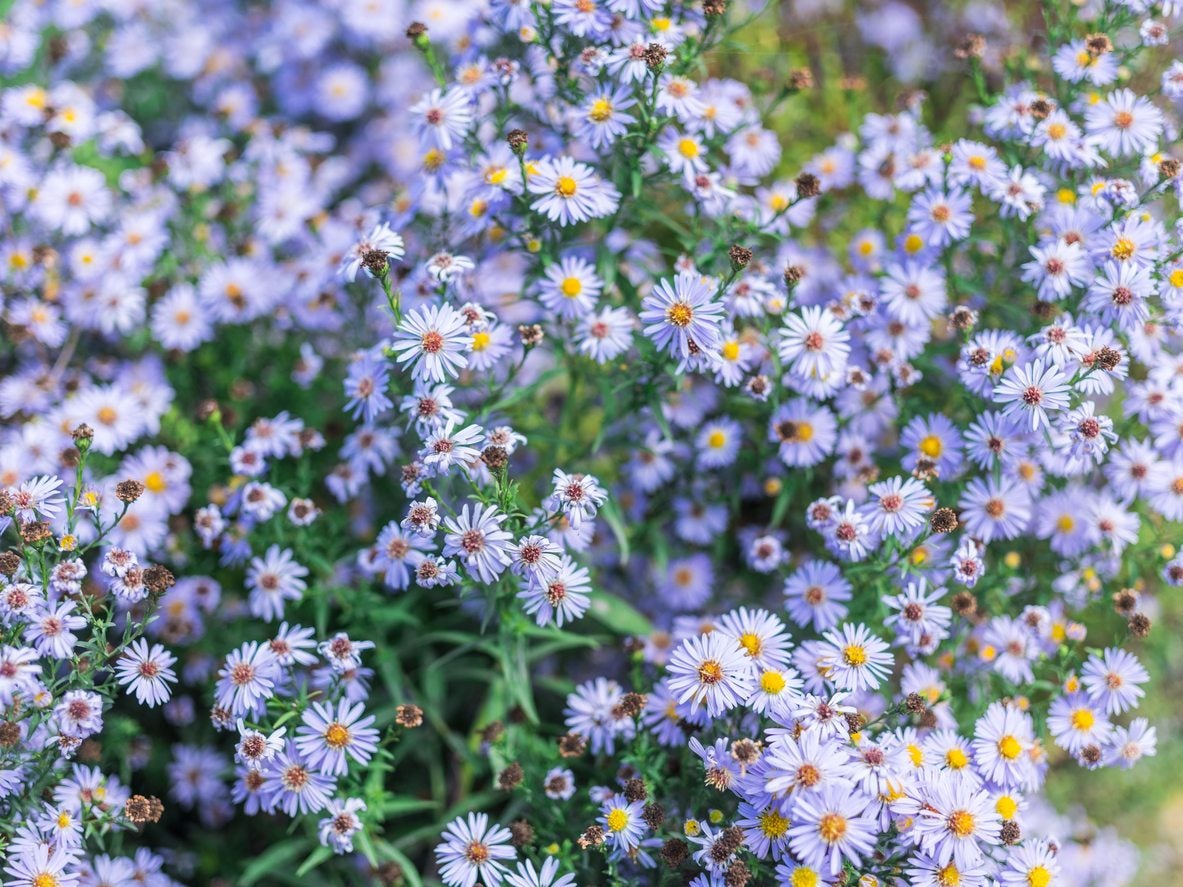Blue Aster Varieties – Choosing And Planting Asters That Are Blue


Asters are popular in perennial flower beds because they produce gorgeous flowers later in the season to keep the garden blooming well into fall. They are also great because they come in so many different colors. Asters that are blue are great for adding a special splash of color.
Growing Blue Aster Flowers
Asters of any color are easy to grow, another reason they are so popular with gardeners. They prefer full sun to partial shade and need well-drained soil. Blue aster flowers and other cultivars do well in zones 4-8. These are perennials that will come back year after year, so divide them every couple of years to keep the plants healthy. Deadheading asters is important because they will self-seed but won’t be true to the parent type. You can either deadhead or cut the stems down when they finish flowering. Expect to get tall, pretty plants, up to four feet (1.2 m.) in height, and flowers that you can enjoy in place or to cut for arrangements.
Blue Aster Varieties
The standard aster color is purple, but cultivars have been developed that come in a range of colors. There are many different types of blue aster plants that can be used to add a splash of unusual color to a bed or border:
- ‘Marie Ballard’ – This cultivar is shorter than others, at 2.5 feet (0.7 m.) and produces double flowers in pale blue.
- ‘Ada Ballard’ – ‘Ada Ballard’ is a little taller than Marie, at three feet (1 m.), and its blooms are a shade of violet-blue.
- ‘Bluebird’ – The sky-blue flowers on ‘Bluebird’ grow in large clusters of small flowers and are prolific. It also has good disease resistance.
- ‘Blue’ – The name of this cultivar says it all, except you should also know that this is a shorter type of aster, growing only to about 12 inches (30 cm.).
- ‘Bonny Blue’ – ‘Bonny Blue’ produces violet-blue flowers with cream-colored centers. This is another shorter cultivar, growing to 15 inches (38 cm.) maximum.
If you love asters and you want to add a little blue to your beds, you can’t go wrong with any of these cultivars.
Sign up for the Gardening Know How newsletter today and receive a free copy of our e-book "How to Grow Delicious Tomatoes".

Mary Ellen Ellis has been gardening for over 20 years. With degrees in Chemistry and Biology, Mary Ellen's specialties are flowers, native plants, and herbs.